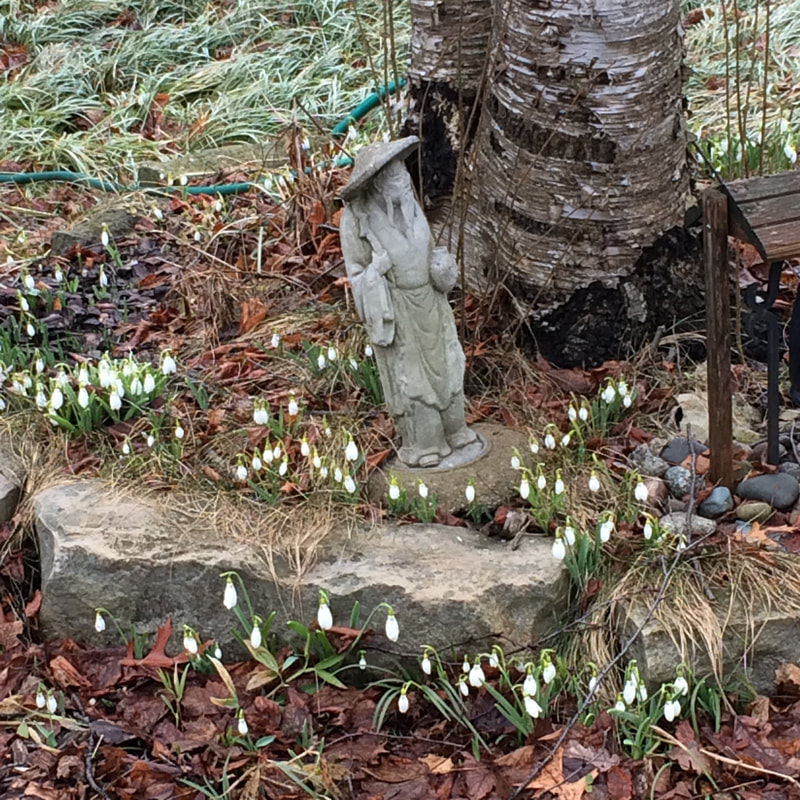|
Story and photo by Donna Iverson
It's that time of year to think like a squirrel. In other words, plan ahead. If you are as clever as our rodent neighbors, you can have flowers in March, maybe even February. What you need to do is purchase spring bulbs like Galanthus, otherwise known as snowdrops. Then plant them in the ground during October or November at the latest. Although small and dainty, snowdrops are capable of pushing through snow cover or frozen dried leaves and covering your lawn in white bell-like flowers. They are the first spring bulb to announce spring, even though spring may still be months away in Michigan. Like many of my favorite spring flowers, snowdrops originated in the wild. It is native to Eastern Europe and Russia. Eventually, it was brought to England during the time of Shakespeare, who claimed it as a native, although it wasn't. And then on to America. Today the plant has been cultivated into many varieties, including double-flowered ones. But I am remain partial to the common single flower native. When you purchase your bulbs, plant them immediately and do not let them dry out. Snowdrops will grow under a deciduous tree in partial shade, as they originated in damp moist woods and along river beds. They can easily be naturalized in a shady area of your lawn where there isn't heavy foot traffic. They will be finished blooming by mowing time. You will need about 10 to 25 bulbs for a good showing. It is also possible to grow them in a pot on your deck, if you are an apartment dweller. Reportedly, snowdrops are toxic to cats and dogs, but they would have to eat the whole patch before suffering ill effects, like nausea. As for humans, the snowdrop contains an alkaloid called galanthamine, which scientists are experimenting with it as a treatment for Alzheimer's disease. In the wild, their habitat is threatened. In Europe, it is illegal to dig up and collect the bulbs. As for the history of the plant, it was once called Candlemas Bells, and dedicated to the Virgin Mary. It can still be found in many churchyards, where it has escaped back to the wild. Symbolically, it represents hope and light. During WWII, the English referred to US army military police as "snowdrops" because of the white helmets they wore. Today, if you are a collector of snowdrops species, you can call yourself a "galanthophile." Happy spring. ..even if it is October.
0 Comments
Your comment will be posted after it is approved.
Leave a Reply. |
Archives
April 2024
Categories |

 RSS Feed
RSS Feed